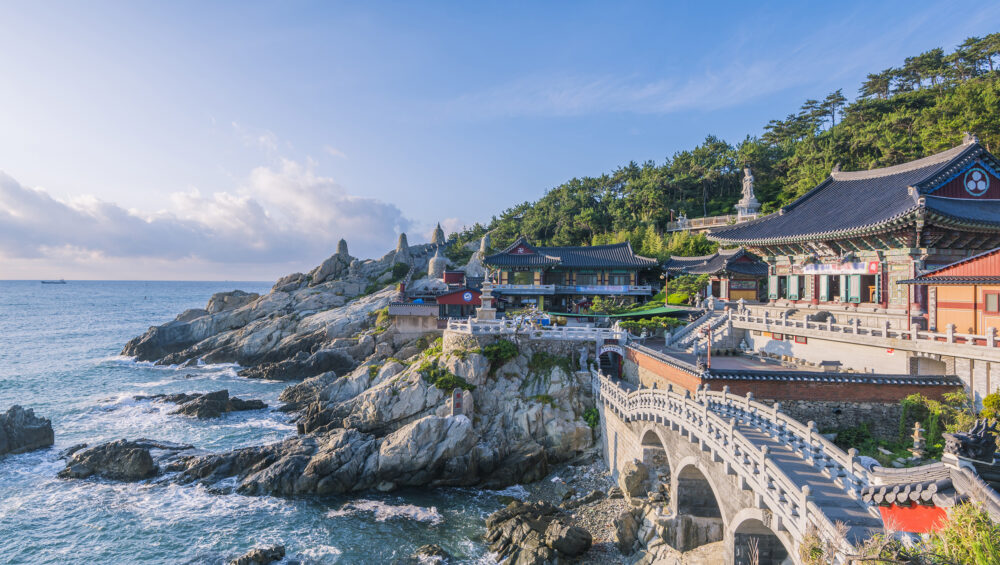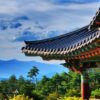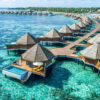Planning a two-week trip to South Korea for an Indian traveller involves creating an itinerary that balances cultural immersion, historical exploration, sightseeing, and gastronomic adventures. South Korea offers a rich tapestry of experiences, from the bustling streets of Seoul to the serene landscapes of Jeju Island. Here’s a suggested itinerary to make the most of your two weeks: –
Week 1: Seoul and Surroundings
Day 1–4: Seoul
Gyeongbokgung Palace: Start with the grandest of the Five Grand Palaces built during the Joseon Dynasty. Don’t miss the changing of the guard ceremony.
Bukchon Hanok Village: Explore traditional Korean houses (hanok) and narrow lanes in this historic neighborhood.
Insadong: Perfect for souvenir shopping and trying traditional Korean snacks and tea.
Myeongdong: A must-visit for street food, shopping, and skincare products.
N Seoul Tower: Offers panoramic views of Seoul. Visit at night for a breathtaking cityscape.
DMZ Tour: Reserve a day for a guided tour of the Demilitarized Zone between South and North Korea, an eye-opening experience about Korean history and current affairs.
Day 5–6: Gyeonggi-do Province
Suwon Hwaseong Fortress: A UNESCO World Heritage site, showcasing impressive architecture and historical significance.
Korean Folk Village: Experience traditional Korean life and culture.
Day 7: Incheon
Chinatown: Explore cultural landmarks and enjoy fusion cuisine.
Songdo Central Park: Relax in this urban park that features a mix of traditional and modern landscape designs.
Week 2: Busan, Gyeongju, and Jeju Island
Day 8–9: Busan
Fly or take a KTX (high-speed train) from Seoul to Busan.
Haeundae Beach: Famous for its scenic views and city skyline.
Gamcheon Culture Village: Known as the “Santorini of the East,” this area is famous for its brightly colored houses and artistic vibe.
Jagalchi Fish Market: Experience Korea’s largest seafood market.
Day 10: Gyeongju
Take a short train ride from Busan to Gyeongju.
Bulguksa Temple and Seokguram Grotto: UNESCO World Heritage sites, showcasing exquisite Buddhist art and architecture.
Anapji Pond: Especially beautiful at night, it was part of a palace complex of the ancient Silla Kingdom.
Day 11–14: Jeju Island
Fly from Busan or take a ferry.
Hallasan National Park: Hike South Korea’s highest mountain. Choose trails according to your fitness level.
Jeongbang Waterfall: The only waterfall in Asia that falls directly into the ocean.
Seongsan Ilchulbong (Sunrise Peak): Offers spectacular sunrise views.
Manjanggul Cave: One of the longest lava tubes in the world.
Travel Tips for Indian Travelers
Visa: Indian citizens need a visa to enter South Korea. Check the latest visa requirements and apply in advance.
Currency: The South Korean Won (KRW) is the currency. Credit cards are widely accepted, but it’s good to have cash for small purchases.
Language: English is not widely spoken outside major tourist areas, so having a translation app or a phrasebook can be handy.
Food: Korean cuisine offers an array of Flavors. Vegetarians should be cautious and clarify their dietary restrictions, as many Korean dishes include meat or fish products. Look for Indian restaurants in major cities for familiar tastes.
Connectivity: Consider renting a portable Wi-Fi device or purchasing a local SIM card to stay connected.
Culture: Respect local customs and etiquette. For example, it’s customary to remove shoes before entering homes and some traditional restaurants.
This itinerary blend modern attractions with historical sites, offering a comprehensive experience of South Korea’s rich culture, history, and natural beauty. Adjustments can be made based on personal interests and travel pace.





